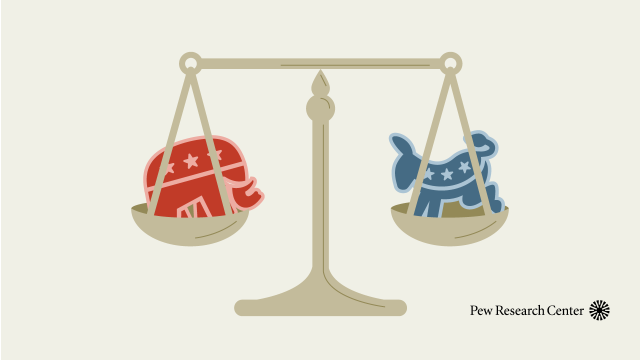
U.S. adults who fall on either end of the ideological spectrum are more active than other Americans across several measures of political engagement, from voting to posting about politics on social media to donating to campaigns. Americans who hold less consistently liberal or conservative views, by contrast, tend to be less engaged on these topics, as Pew Research Center studies have long found. Here are some recent findings that illustrate this dynamic.
This analysis relies on findings from a variety of Pew Research Center surveys and studies. Because these reports were produced at different times, some of them measured ideology in different ways. For more information about each of these reports, read the links included in the analysis. For information about how the political typology groups were constructed, read the report’s methodology.
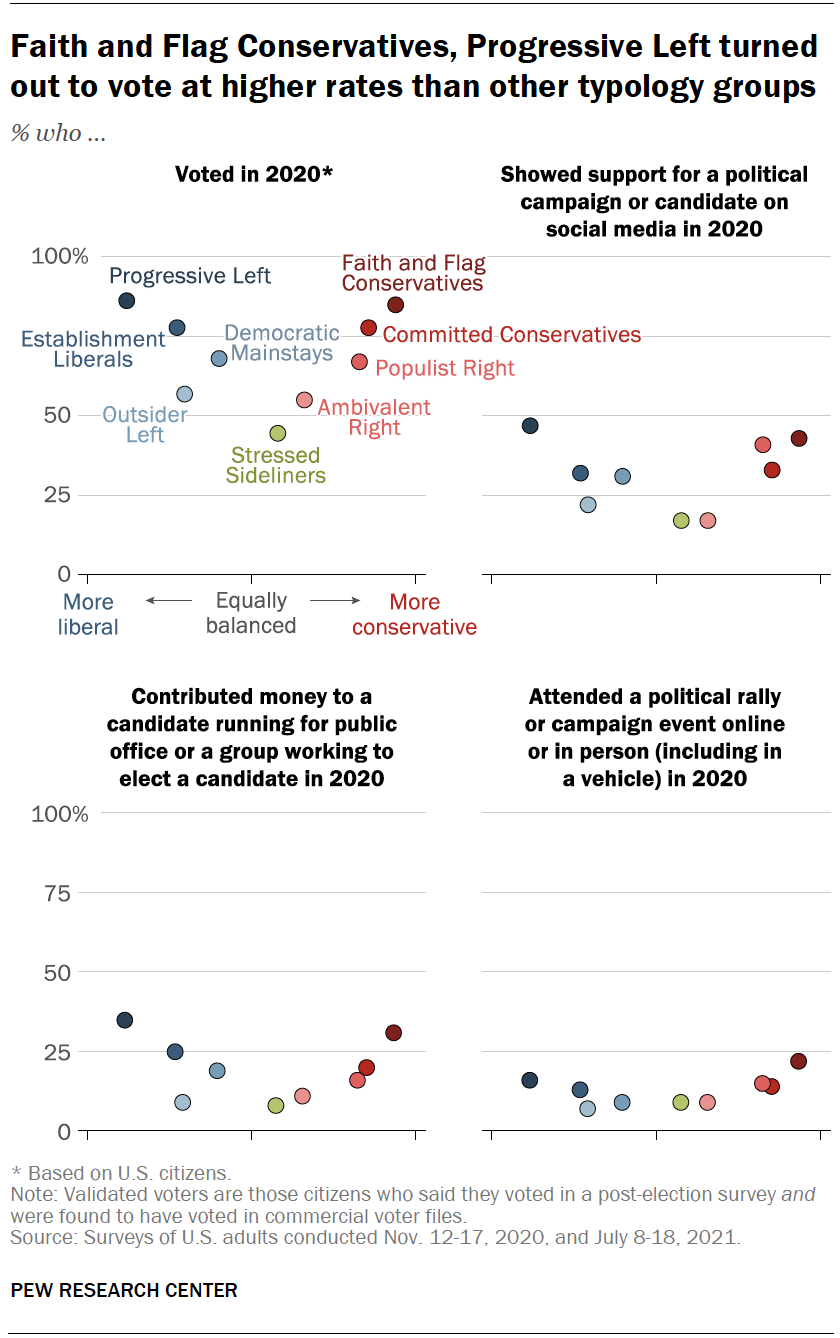
- In a major 2021 study, the Center sorted Americans into nine political typology groups, based on an analysis of their political attitudes and values. The typology groups at either end of the political spectrum – Faith and Flag Conservatives on the right and Progressive Left on the left – are also the most politically engaged by several measures. The groups toward the middle of the ideological spectrum, those deemed Stressed Sideliners, Ambivalent Right or Outsider Left, have much lower levels of political engagement.
About 85% of adults in the two groups at the ends of the political spectrum voted in 2020 (85% of Faith and Flag Conservatives and 86% of Progressive Left). Moving from either end of the typology toward more ideologically mixed groups shows a gradual decrease in turnout. Faith and Flag Conservatives and those categorized as Progressive Left were also the most likely to report having contributed money to candidates and political organizations in 2020, to have posted support for a candidate or campaign on social media, and to have attended political rallies in person or virtually.
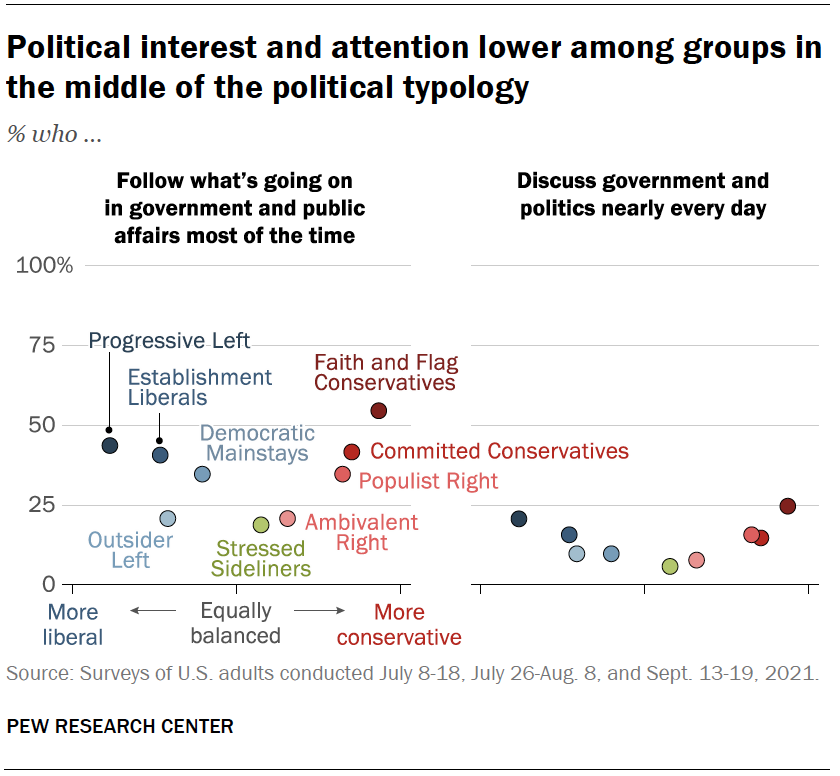
- The typology groups at the ends of the spectrum register much higher levels of general interest in politics as well. More than half of Faith and Flag Conservatives (55%) say they follow what is going on in government most of the time, followed by Progressive Left (44%), Establishment Liberals (41%) and Committed Conservatives (42%). By comparison, only 19% of Stressed Sideliners say they keep such close tabs on politics and government. Those categorized as Progressive Left or Faith and Flag Conservatives are also generally more likely than other groups to say they talk about politics frequently.
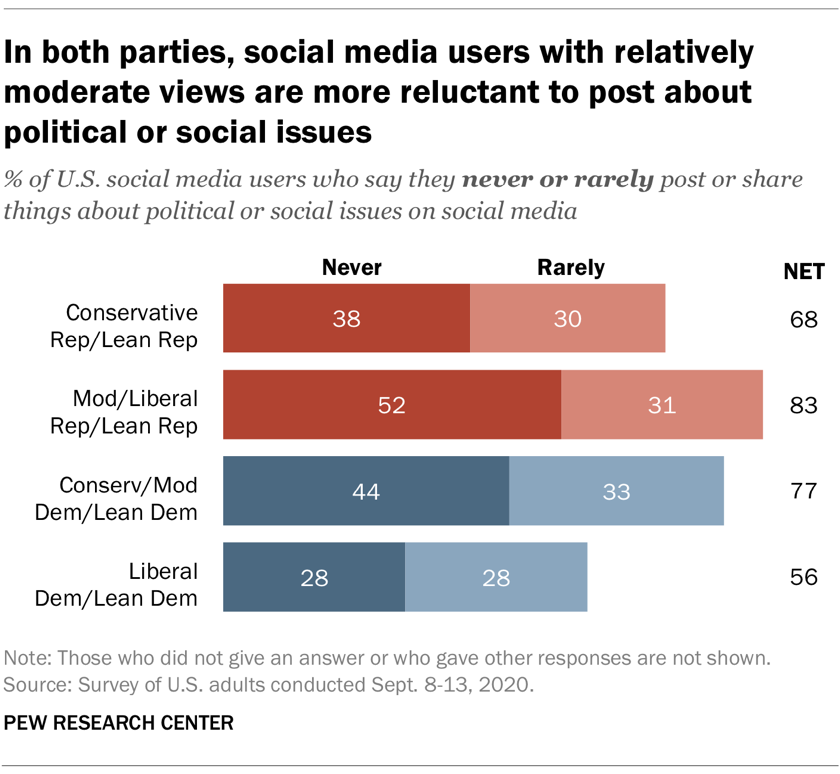
- Other Center studies have found that this pattern also emerges when it comes to activity on social media. In a September 2020 survey, for example, few social media users overall said they post or share about political or social issues online – 9% said they often do this, and 20% said they sometimes do so. But the 70% of social media users who reported rarely or never posting about political or social issues were more likely to be self-described liberal or moderate Republicans and self-described conservative or moderate Democrats.
Among social media users, Republicans who identified as moderate or liberal were 15 percentage points more likely than conservative Republicans to say they never or rarely post or share about political or social issues (83% vs. 68%). Similarly, roughly eight-in-ten conservative or moderate Democrats who use social media (77%) said they never or rarely post this type of content, compared with a smaller share of liberal Democrats (56%).
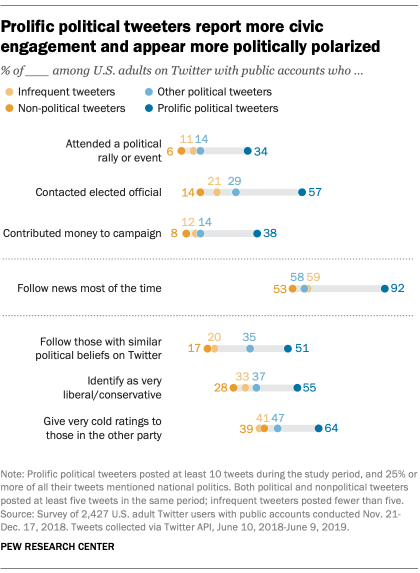
- Several Center analyses have found that a small share of Twitter users produce the majority of content on the site. The Twitter conversation about national politics is also driven by a small number of prolific users, according to a 2019 analysis. Some 55% of highly active political tweeters described themselves as either very liberal or very conservative, based on an 11-point measure of ideology where scores of 0 (most conservative) to 2 were defined as very conservative, and scores of 8-10 were defined as very liberal. Among nonpolitical tweeters, 28% also chose one of these more polarized options.
In addition to being at the ends of the political spectrum, prolific political tweeters were especially likely to report engaging in political activities. In the year prior to the survey (a time period that included the 2018 midterm election), 34% of this group reported attending a political rally or event, while 57% said they contacted an elected official and 38% said they contributed money to a political campaign.



